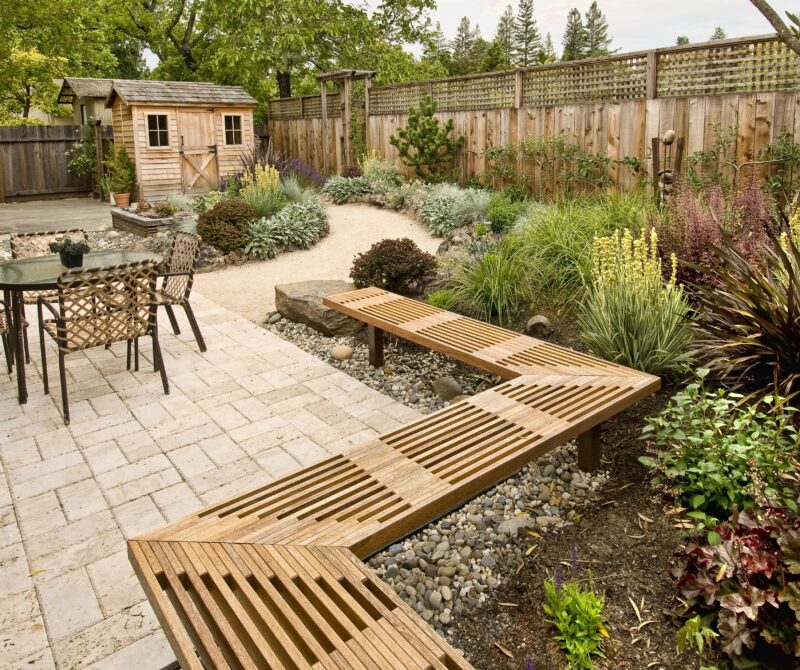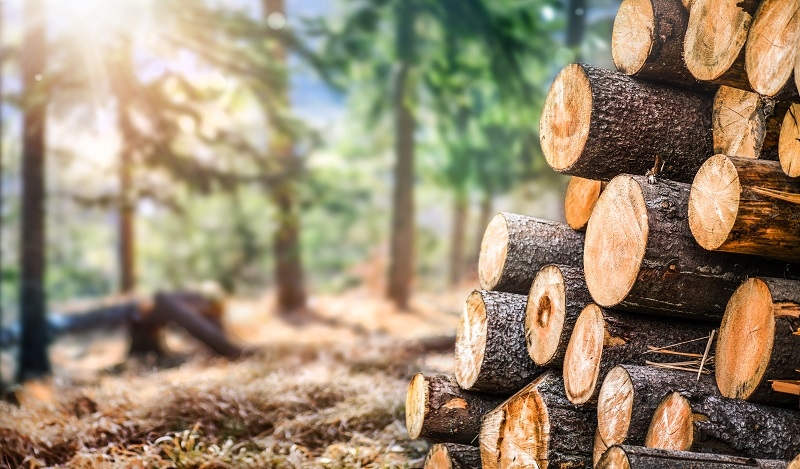Published: 28/11/19 By: Mike Bekin
It is vital that the timber you choose is suitable for the project’s location, weather and environment. In order to ensure the correct timber is selected, both durability and use class play an important part in the decision process. Here, we discuss in further detail what this means. This will help you decide which is most important when checking whether the timber you are considering is going to meet your requirements and be suitable for your project.
Durability refers to the time the timber will last and is usually measured in years. Everything decays, even steel and concrete, so the durability of a timber (number of years it will serve its purpose) depends on how it performs in a particular environment.
Here is an example of this relationship: a commonly known non-durable species such as European Beech will not last many years if left outside, especially if in ground contact. But it may last centuries as a table in your kitchen or as your bookshelves. The environment where a timber is used is called use-class.
Many hardwood species of timber have natural durability and can even be used outdoors untreated. The downside to this is that the cost of these naturally durable hardwood species is often high and supply sometimes limited (although Ecochoice can always offer suitable alternatives). Some softwoods are durable to an extent, however, the majority of them will need additional preservative treatment before they can be used outdoors or in environments prone to condensation or humidity. On the plus side, these softwoods are less costly and more widely available.
Finally, you have modified timbers such as OrganoWood or Thermodified timbers, which are both more sustainable and durable. These are only slightly more expensive, but they are becoming a more popular and widely available option. (For more information on the differences between hardwoods and softwoods, read our blog here)
Durability Class Summary
In order to easily identify the durability of any timber, each species is given a durability class. This shows you the life span of the wood and has to be considered relative to where the timber will be used (use class). The standard test to determine the durability of timber involves taking a stake of the heartwood, placing it into the ground, and monitoring it over time.
Class 5: Not durable. For example, Birch and Beech or any sapwood. Life span of 0-5 years.
Class 4: Slightly durable – For example, Scots Pine, Spruce. Life space of 5-10 years.
Class 3: Moderately durable- For example, Douglas Fir. Life span of 10-15 years.
Class 2: Durable- For example, Oak and Cedar. Life span of 15-25 years.
Class 1: Very Durable- For example, Teak, Greenheart and Jarrah. Timber life span of 25+ years.
If the timber is kept in a protected, internal environment, then the lifespan can actually be 50+ years, so the lifespan figures in the Class system refer to the lifespan in external, unprotected environments.
Use Class
Although durability is an important consideration when choosing timber for your project, it is not the only factor you need to take into account. Yes, you need a timber that has the durability level you desire; however, you also need to think about where the timber will be located during it’s intended use. Will the timber be used purely for internal joinery? Or will the timber be needed for external garden landscaping or even marine projects?
The eventual end use of preservative-treated timber is classified into one of 5 categories (also known as Use Classes). These were established and defined in British EN standards BS-EN 355-1 and have been based on how at risk the timber would be from insect attacks and decay. The Use Class system is used widely across the timber industry to help determine the level of treatment that is required depending on the environment the timber is going to be used. The higher the Use Class number is, the more at risk that timber is and therefore, a stronger treatment will need to be applied.
Use Class Summary
Here is an overview of what the 5 Use Classes of timber are:
Use Class 1: Internal use which is kept dry permanently- For example, floor joists, floorboards or internal joinery. The main risk for this timber is insect damage as opposed to water damage. The level of risk of wood-boring insects attacking the timber partly depends on the geographical location and therefore will vary significantly.
Use Class 2: Internal use which is slightly at risk of becoming wet (ie. due to condensation). For example, framing for external walls. Attack by wood-destroying fungi is also a slight possibility.
Use Class 3 (coated): External use which is kept above ground and is coated. For example, cladding or window frames.
Use Class 3(uncoated): External use which is kept above ground but uncoated. For example, fence rails.
Use Class 4: External use which has direct soil or water contact. For example, fence posts or decking which is sunk into the ground.
Use Class 5: External use which will be in regular or constant contact with the ground or water. For example, marine piling, sea defence, ships, dock gates.
It is important that you always check with your timber supplier which Use Class the timber you are purchasing is. This is even more vital if you are intending the timber to come into contact with the ground.
Treatment Process
Once you have identified what the Use Class of the timber needs to be, there are 2 main types of treatment processes used: high pressure and low pressure.
High-pressure treatment is suitable for the full range of uses and is especially good for getting timber suitable for outdoor use. The treatment also provides a 15-60 year service life. The preservatives are forced deep into the cellular structure of the timber which sometimes gives the wood a green tint. The high-pressure process is suitable for use in external environments or when the timber will be in contact with the ground. As this timber will have greater exposure to moisture and rainfall, it is essential that the treatment can be impregnated deep into the wood. Although the high-pressure treatment can be used for all end uses it is particularly good when treating fence posts, decking, sleepers and fencing.
Low-pressure treatment is used for Use Class 1, 2 or 3 coated. This treatment can deliver a 30-60 year service life. The benefit of this treatment is it leaves the colour of the wood virtually unchanged. Low pressure offers long term protection for timber which is at low to medium risk but is for internal use only. The process is applied using a double vacuum process and provides protection against insect and fungi for the lifetime of the timber when applied in Use Class 1 and 2 environments. As this form of treatment avoids the core of the timber, the dimensions and natural moisture content is unchanged, making this a great option for protecting construction grade timbers.
The class level achieved during the treatment process is determined by the number of chemicals retained in the wood.
It is important to note that the durability is based on ground contact which is of course, not always relevant. That is why it is also important to consider the Use Class of the timber, as this is based on what the final use will be.
Questions to Ask before buying the timber for your project
- Where is the timber going to be used during its application?
- How durable is the timber you are choosing?
- Is the timber naturally durable?
- If the timber is not naturally durable, does it have the correct Use Class?
- Do you have proof from your supplier as to what Use Class the timber has been treated to?
The durability class given to a timber reflects its ability for the heartwood to resist decay and attacks from insects. Durability is a good indication on how long the timber should last, however, it does not take into account all of the variables that can affect its lifespan. These variables include moisture, weather, temperature, how well it has been installed, and the physical stress the timber must endure.
For maximum quality both the natural durability of the timber along with its Use Class need to be considered together. Although both durability and use class are split into a Class rating system, the two should not be confused. Although they are both equally important measurements, they should never be used interchangeably. When selecting your timber for a construction project, ensure you are aware of both the durability and Use Class of the wood. This will allow you to choose the most effective and suitable type of timber, to achieve high quality and lasting constructions.
Who are EcoChoice?
EcoChoice are specialist suppliers of certified timber and recycled plastic products for exterior works: from cladding and decking to piers and footbridges. We were formed in 2005 with the aim of promoting FSC® certified timbers to the UK construction industry, helping customers to engage in a sustainable way instead of turning away from both the deforestation and plastic waste problems. We offer products from a wide range of timber species.
We are passionate about supplying our clients with independently certified timber products while encouraging responsible and sustainable practices at the source level. To find out how we can help you get a quick, no-obligation quote, please call us on 0345 638 1340, email us on info@ecochoice.co.uk or for more information about our sustainable timber products, please visit our website.
Tags: Durability, Timber
Categories: Insights

